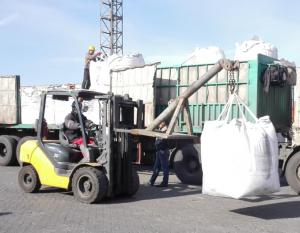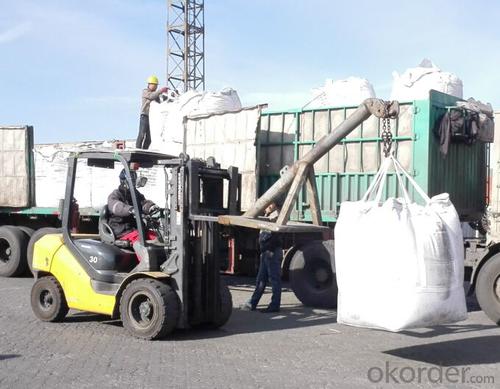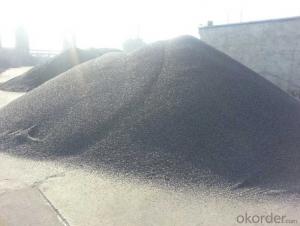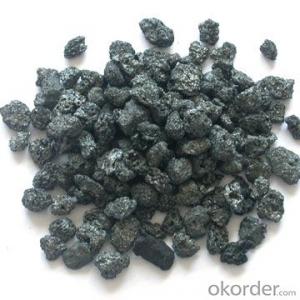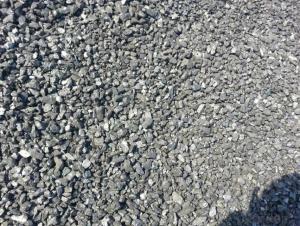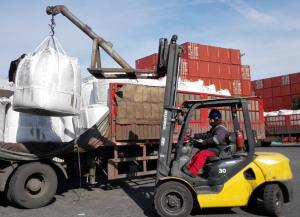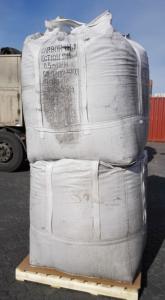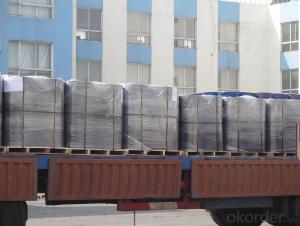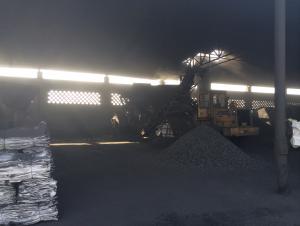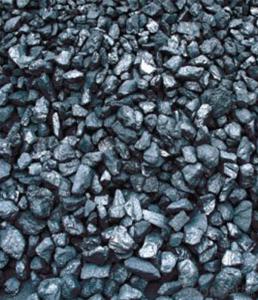High FC Carbon Coke FC98% from CNBM China
- Loading Port:
- Tianjin
- Payment Terms:
- TT or LC
- Min Order Qty:
- 20 m.t.
- Supply Capability:
- 1500 m.t./month
OKorder Service Pledge
OKorder Financial Service
You Might Also Like
Packaging & Delivery
| Packaging Detail: | 50kg/bag 100kg/bag 1000kg/bag Or according with client need to do |
| Delivery Detail: | 2 weeks |
Specifications
High FC Carbon Coke FC98% from CNBM China
Petroleum coke products can be divided into needle coke, sponge coke, projectile coke and coke breeze four kinds.
Calcined Petroleum Coke
F.C.: 98.5%MIN
ASH: 0.8% MAX
V.M.: 0.7%MAX
S:0.5%MAX
Moisture: 0.5%MAX
Structure
High FC Carbon Coke FC98% from CNBM China
Shape: granule
Dimensions: 0-1mm, 1-5mm, 1-6mm, 2-8mm, etc
Product Type: Carbon Additive
C Content (%): 98-99.5% MIN
Working Temperature: -
S Content (%): 0.5%-0.7%MAX
Ash Content (%): 0.7%MAX
Volatile:0.8%MAX
Moisture: 0.5% MAX
ADVANTAGE: low ash & sulfur
COLOR: Black
Feature
High FC Carbon Coke FC98% from CNBM China
Physics and chemistry performance:
Unit | Index | |||||
No.1 | No.2 | No.3 | ||||
Density | g/cm3 | 2.04 | 2.00 | 2.00 | ||
sulphur content | %≤ | 0.5 | 1.0 | 2.5 | ||
volatility | %≤ | 0.5 | 0.5 | 0.5 | ||
ash content | %≤ | 0.5 | 0.5 | 0.5 | ||
moisture | %≤ | 0.3 | 0.5 | 0.5 | ||
charcoal | %≤ | 98.5 | 98.0 | 98.0 | ||
Image
High FC Carbon Coke FC98% from CNBM China
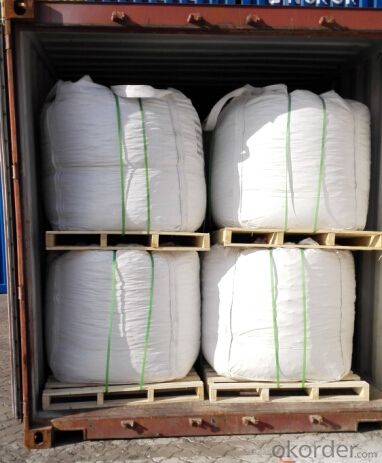
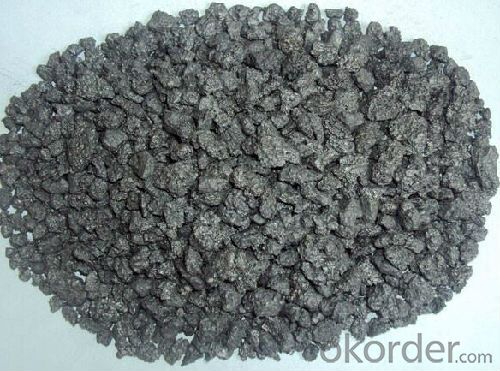
FAQ:
High FC Carbon Coke FC98% from CNBM China
How to classify calcined petroleum coke?
1) According to difference of sulfur content, can be divided into high sulfur coke (sulfur content more than 4%), sulphur in coke sulfur content (2% 4%) and low sulfur coke (sulfur content below 2%).
2) Petroleum coke products can be divided into needle coke, sponge coke, projectile coke and coke breeze four kinds:
3) Needle coke, has obvious needle-like structure and fiber texture, mainly used for steel-making in high power and ultra-high power graphite electrode. As a result of needle coke in sulfur content, ash content, volatile matter and true density and so on have strict quality requirements, so the production process of needle coke and raw materials have special requirements.
4) The sponge coke, high chemical reactivity, low content of impurities, mainly used in the aluminum industry and carbon industry.
5) Focal or spherical coke: the projectile shape is round, diameter 0.6-30 mm, usually from the production of high sulphur, high asphaltic residual oil, can only be used as industrial fuel power generation, cement etc.
6) Coke breeze: fluidized coking process, the fine particles (0.1- 0.4 mm) in diameter, high volatile, high expansion coefficient, cannot be directly used for electrode preparation and carbon industry.
Advantage:
High FC Carbon Coke FC98% from CNBM China
1. High quality and competitive price.
2. Timely delivery.
3. If any item you like. Please contact us.
Your sincere inquiries are typically answered within 24 hours.
- Q: What is carbon neutral?
- Carbon neutral refers to the state in which an individual, organization, or activity has achieved a balance between the amount of carbon dioxide emitted into the atmosphere and the amount that is removed or offset. It is a term commonly used in the context of addressing climate change and reducing greenhouse gas emissions. To become carbon neutral, one must first measure their carbon footprint, which includes calculating the amount of greenhouse gases produced through activities such as energy consumption, transportation, and waste management. After identifying the emissions, steps are taken to reduce them through various means, such as energy efficiency improvements, use of renewable energy sources, and sustainable practices. While reducing emissions is crucial, it is often difficult to completely eliminate carbon emissions. In such cases, carbon offsets can be used to compensate for the remaining emissions. Carbon offsets involve investing in projects that reduce or remove greenhouse gases from the atmosphere, such as reforestation, renewable energy initiatives, or methane capture projects. By achieving carbon neutrality, individuals, organizations, or activities can claim that they are not contributing to the increase of greenhouse gases in the atmosphere. This is an important goal in the fight against climate change, as it helps to mitigate the negative impacts of carbon emissions and promotes a more sustainable and environmentally friendly future.
- Q: What are the different allotropes of carbon?
- There are several different allotropes of carbon, each with its own unique physical and chemical properties. The most well-known allotrope of carbon is diamond, which is known for its hardness and brilliance. Diamond is made up of a three-dimensional arrangement of carbon atoms, each bonded to four neighboring carbon atoms in a tetrahedral structure. Another allotrope of carbon is graphite, which is known for its softness and ability to conduct electricity. In graphite, carbon atoms are arranged in layers that are held together by weak forces, allowing the layers to slide over each other easily. This layered structure gives graphite its lubricating properties. Fullerenes are another class of carbon allotropes, which are made up of carbon atoms arranged in closed cage-like structures. The most well-known fullerene is buckminsterfullerene (C60), which consists of 60 carbon atoms bonded together to form a hollow sphere resembling a soccer ball. Fullerenes have unique properties such as high tensile strength and the ability to act as superconductors. Carbon nanotubes are another allotrope of carbon, which are cylindrical structures made up of rolled-up graphene sheets. Carbon nanotubes can have different structures and properties depending on the arrangement of carbon atoms. They are known for their exceptional strength, electrical conductivity, and thermal conductivity. Amorphous carbon is another carbon allotrope, which does not have a definite crystal structure. It is often found in substances like soot, coal, and charcoal. Amorphous carbon can have a wide range of properties depending on its structure, ranging from soft and powdery to hard and brittle. These are just a few examples of the different allotropes of carbon. The ability of carbon to form various allotropes with vastly different properties contributes to its importance in a wide range of applications, including jewelry, electronics, and material science.
- Q: They include a cementite, two cementite, three cementite, eutectic cementite and eutectoid cementite, and compare their temperature, composition and morphology
- Two: cementite in iron graphite phase, carbon content more than 0.77%, in A (Fe + Fe3C) two-phase region precipitation of Fe3C is two times the cementite formation temperature in the eutectic temperature (1148 DEG C) and eutectoid temperature (727 DEG C), morphology of the mesh is a typical carbon content. From 0.77% to 6.69% is the typical composition range.
- Q: What is carbon nanotechnology?
- Carbon nanotechnology is a branch of science and engineering that focuses on the manipulation and study of materials at the nanoscale using carbon-based materials, such as carbon nanotubes and graphene. Nanotechnology, in general, deals with structures and devices at the nanometer scale, which is about 1 to 100 nanometers in size. Carbon nanotechnology takes advantage of the unique properties of carbon to create and control nanostructures with exceptional mechanical, electrical, and chemical properties. Carbon nanotubes, for example, are cylindrical structures made of carbon atoms arranged in a hexagonal lattice. They have remarkable strength, thermal conductivity, and electrical properties due to their unique structure. Carbon nanotubes can be used in a wide range of applications, such as electronics, energy storage, and materials science. They hold great promise for creating stronger and lighter materials, more efficient batteries, and faster and smaller electronic devices. Graphene, another carbon-based material, is a single layer of carbon atoms arranged in a hexagonal lattice. It is known for its exceptional strength, electrical conductivity, and thermal conductivity. Graphene has the potential to revolutionize various industries, including electronics, medicine, and energy. Its properties make it a promising candidate for flexible electronics, high-performance batteries, and even drug delivery systems. Carbon nanotechnology also involves the development of methods to synthesize and manipulate carbon-based nanostructures. Researchers use various techniques like chemical vapor deposition, laser ablation, and molecular self-assembly to create nanoscale carbon materials. These techniques allow for precise control over the size, shape, and properties of the nanostructures, enabling the design of materials with tailored properties for specific applications. In summary, carbon nanotechnology is a field that explores the unique properties and applications of carbon-based materials at the nanoscale. It holds immense potential for revolutionizing various industries and creating new technologies that could benefit society in numerous ways.
- Q: How is carbon used in the production of graphite?
- Carbon is a key component in the production of graphite. Graphite is a crystalline form of carbon with a unique structure that gives it its distinctive properties. To produce graphite, carbon is subjected to extreme heat and pressure, which causes the carbon atoms to rearrange into layers of hexagonal rings. These layers are stacked on top of each other, forming the graphite's characteristic layered structure. The process begins with a high-quality carbon source, such as petroleum coke or coal tar pitch. These carbon sources are first heated to very high temperatures to eliminate impurities and convert them into a pure carbon material called coke. The coke is then ground into a fine powder and mixed with a binder, usually a form of pitch, to form a paste. This paste is then shaped into the desired form, such as rods or blocks, and subjected to high temperatures in a furnace. The heat causes the binder to decompose and the carbon atoms to rearrange into the hexagonal layers that are characteristic of graphite. The high pressure present in the furnace helps to align the carbon layers, resulting in the formation of graphite crystals. After the furnace process, the graphite is further purified through a series of treatments, including chemical washing and acid leaching, to remove any remaining impurities. Finally, the purified graphite is shaped into the desired final product, such as pencils, electrodes, or lubricants, through processes like extrusion or machining. In summary, carbon is used in the production of graphite by subjecting a carbon source to high temperatures and pressures, resulting in the formation of graphite crystals with its unique layered structure. This process allows for the production of various graphite products that are widely used in industries such as manufacturing, electronics, and energy.
- Q: Does anyone know what the definition of carbon storage is in ecology? Thank you
- 1, store it in a certain range.2 carbon storageAbout 2. No need to explain1 of the words is "popular carbon dioxide storage".. Current storage practices are generally to collect CO2 in the atmosphere and inject gas into the ground
- Q: How does carbon affect the preservation of historical artifacts?
- Carbon can negatively affect the preservation of historical artifacts by accelerating their deterioration through processes like oxidation, acidification, and microbial growth.
- Q: How does carbon impact the fertility of soil?
- Soil fertility relies heavily on carbon, which serves as the foundation for organic matter. Organic matter, derived from decaying plant and animal residues, enhances the soil's structure, nutrient-holding capacity, and water retention. This results in improved support for plant growth and microbial activity. Not only does organic matter supply carbon, but it also provides nutrients to plants through the process of decomposition. Microorganisms, fungi, and bacteria decompose organic matter and release nutrients like nitrogen, phosphorus, and potassium into the soil. These nutrients become available for plants to absorb. Additionally, carbon in organic matter binds soil particles, preventing erosion and improving soil structure. Furthermore, carbon plays a crucial role in water management for plants. It acts as a sponge, absorbing and retaining moisture, which helps sustain plant growth during dry periods. Carbon also fosters the growth of a diverse and healthy microbial community in the soil, including beneficial bacteria and fungi. These microorganisms contribute to nutrient cycling, disease suppression, and plant nutrient uptake, further enhancing soil fertility. However, it is important to avoid excessive carbon inputs or improper land management practices, as they can negatively affect soil fertility. An imbalance in carbon availability can lead to nitrogen immobilization, where microorganisms consume nitrogen for their own growth, depriving plants of this essential nutrient. Additionally, high carbon content can create anaerobic conditions, limiting oxygen availability for plant roots and beneficial soil organisms. To ensure optimal soil fertility, it is crucial to maintain a balanced carbon-to-nitrogen ratio and adopt sustainable land management practices. Carbon is an indispensable component for maintaining soil health by improving structure, nutrient availability, water retention, and microbial activity.
- Q: What is carbon nanotube?
- Carbon nanotubes are cylindrical structures made up of carbon atoms arranged in a unique hexagonal lattice pattern. They are incredibly small, with diameters on the nanometer scale (about 1 billionth of a meter) and lengths that can range from a few nanometers to several centimeters. Carbon nanotubes possess remarkable properties that make them highly attractive for a wide range of applications. They are incredibly strong, with tensile strength that exceeds that of any other known material, making them ideal for use in structural composites. They also have excellent electrical conductivity, thermal conductivity, and are chemically stable, which makes them useful in fields such as electronics, energy storage, and catalysis. There are two main types of carbon nanotubes: single-walled nanotubes (SWNTs) and multi-walled nanotubes (MWNTs). Single-walled nanotubes consist of a single layer of carbon atoms rolled into a tube, while multi-walled nanotubes consist of multiple concentric layers of carbon atoms. The arrangement of carbon atoms and the diameter of the tube determine the properties of the nanotube. Carbon nanotubes have the potential to revolutionize various industries due to their unique properties. They are being explored for applications in electronics, where they can be used as high-performance transistors, interconnects, and sensors. They also hold promise in the field of energy storage, as they can be used in batteries and supercapacitors that have higher energy densities and faster charging rates. Additionally, their high surface area and unique chemical properties make them suitable for catalytic applications, such as water purification and chemical synthesis. Despite their immense potential, there are still challenges to overcome in the large-scale production and commercialization of carbon nanotubes. However, ongoing research and development efforts continue to push the boundaries of their applications, making carbon nanotubes an exciting field of study with significant future possibilities.
- Q: What is the role of carbon in the human body?
- Carbon plays a crucial role in the human body as it is a fundamental element for all organic molecules. It is the backbone of many biomolecules, including carbohydrates, lipids, proteins, and nucleic acids, which are essential for various physiological processes. Firstly, carbon is a key component of carbohydrates, which are the primary source of energy for the body. Glucose, a simple sugar composed of carbon, hydrogen, and oxygen, is broken down in cells to release energy through cellular respiration. Additionally, carbon forms the structure of complex carbohydrates like glycogen, which is stored in the liver and muscles as an energy reserve. Secondly, carbon is present in lipids, such as fats and oils, which serve as an energy source, insulation, and protection for organs. Carbon atoms are arranged in long hydrocarbon chains, making lipids hydrophobic and allowing them to store and release energy efficiently. Lipids also play a crucial role in cell membrane structure and hormone production. Furthermore, carbon is a fundamental component of proteins, which are involved in almost all cellular processes. Proteins are composed of amino acids, and carbon atoms form the backbone of these amino acids, providing stability and flexibility to the protein structure. Carbon also participates in the formation of peptide bonds, which link amino acids together to build proteins. Proteins are essential for various functions, including enzyme catalysis, transport and storage of molecules, immune response, and cell signaling. Lastly, carbon is a vital element in nucleic acids, such as DNA and RNA, which contain genetic information. Carbon atoms form the sugar-phosphate backbone of nucleic acids, providing stability to the structure. DNA carries hereditary information, while RNA plays a crucial role in protein synthesis. In summary, carbon is essential in the human body as it forms the basis of organic molecules like carbohydrates, lipids, proteins, and nucleic acids. Its versatility and ability to form stable bonds allow for the diverse functions and structures necessary for life processes.
Send your message to us
High FC Carbon Coke FC98% from CNBM China
- Loading Port:
- Tianjin
- Payment Terms:
- TT or LC
- Min Order Qty:
- 20 m.t.
- Supply Capability:
- 1500 m.t./month
OKorder Service Pledge
OKorder Financial Service
Similar products
Hot products
Hot Searches
